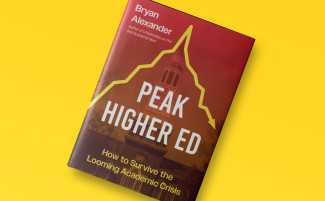
Johns Hopkins UniversityEst. 1876
America’s First Research University
Excited Delirium: Why does this discredited term stick around?

In the evening of March of 2020, Daniel Prude, a 41-year-old African American man began behaving erratically, running through the streets in little clothing, despite the cold weather. The police were called, who pinned him to the ground and placed a hood over his head. He appeared to be struggling to breathe and soon after, he stopped moving. Paramedics found he had no heartbeat and he was later declared brain dead. On the autopsy, "excited delirium" was offered as a contributing factor to his death, and this diagnosis helped inform a jury who chose not to indict the officers.
In our recent Philosophy, Psychiatry, & Psychology article, “Making up Monsters, Redirecting Blame: An Examination of Excited Delirium,” we explore why the controversial diagnosis of "excited delirium" sticks around and what work it is doing in the world. Despite increasing calls to recognize the diagnosis as invalid and problematic, it continues to circulate widely within the domains of police training, emergency medicine, and on coroner’s reports.
In our examination, we attempt to answer several questions about "excited delirium." First, we explore what kinds of people are made up by the diagnosis. "Excited delirium" has been described as a state of agitation involving erratic behavior, coupled with an inability to feel pain and superhuman strength. Like Prude, the diagnosis is most often applied to men of colour who are experiencing distress, in relation to mental illness or drug use or neither. The description of men who are super strong and cannot feel pain brings to mind racial stereotypes of insensitive brutes who can be treated like animals.
We also ask what kinds of behaviors are engendered through "excited delirium." The diagnosis offers an invitation for police officers to use force and restraint in order to subdue an individual they perceive as having superhuman strength and no ability to feel pain. The diagnosis is later used to justify the use of such force, and to redirect responsibility away from it, and towards an alternative explanation for why someone might have died. Rather than seeing the influence of chokeholds and hogties, a mysterious diagnosis is blamed.
"Despite increasing calls to recognize the diagnosis [of "excited delirium"] as invalid and problematic, it continues to circulate widely within the domains of police training, emergency medicine, and on coroner’s reports. "
Next, we explore who the diagnosis might be serving, narrowing in on Axon, the company that owns Taser, that has funded the circulation of knowledge related to excited delirium, in lawsuits, textbooks, and through several ‘experts’. In contrast, the diagnosis is not serving those who it is applied to, or their families and friends, who are left without a clear explanation or examination of the death, or mistreatment, of their loved one. Finally, we look at the slippery logic of "excited delirium," a diagnosis which invokes various factors to explain its occurrence (e.g., mental illness, drug use, bad genes), depending on the occasion, and which resists falsification by any means.
Fortunately, increasing criticisms of the term are being voiced. California banned the use of the term in coroner’s reports, four provinces in Canada have said they longer accept it as a cause of death, and Colorado has removed excited delirium from all police training materials. Even the American College of Emergency Physicians, who published a foundational report on the topic of excited delirium, have retracted this report, distancing themselves from the term. However, even if this term falls out of circulation, it is worth reflecting on whether the work it is doing will continue to be done. Will a new term take its place? Unfortunately, several have already been proposed.
Read “Making up Monsters, Redirecting Blame: An Examination of Excited Delirium” in the new issue of Philosophy, Psychiatry, & Psychology, free through 31 May.
Read further with a pair of commentaries,"Excited Delirium: The Self-Fulfilling Prophecy of Police Brutality" by Kathryn Petrozzo and "Excited Delirium: What’s Psychiatry Got to do With It?" by Paul B. Lieberman, MD, as well as our response: "Excited Delirium: Falsifiability, Causality, and the Importance of Advocacy" — freely available to all for the month of May.
Phoebe Friesen, PhD is a philosopher and medical ethicist, working within the Department of Equity, Ethics, and Policy and the Department of Social Studies of Medicine at McGill University. Her work engages with ethical and epistemic issues related to the production and implementation of knowledge in the health sciences, drawing on feminist philosophy of science, ethics scholarship, and methodologies from the social sciences.
Arjun Byju, MD is a resident physician in the department of diagnostic radiology at the University of California Davis Medical Center. His work focuses on the history of medicine, bioethics, and marginalized patient populations. His essays have appeared in Current Affairs, Real Life, Natural History, and The Journal of Medical Ethics, among others.


